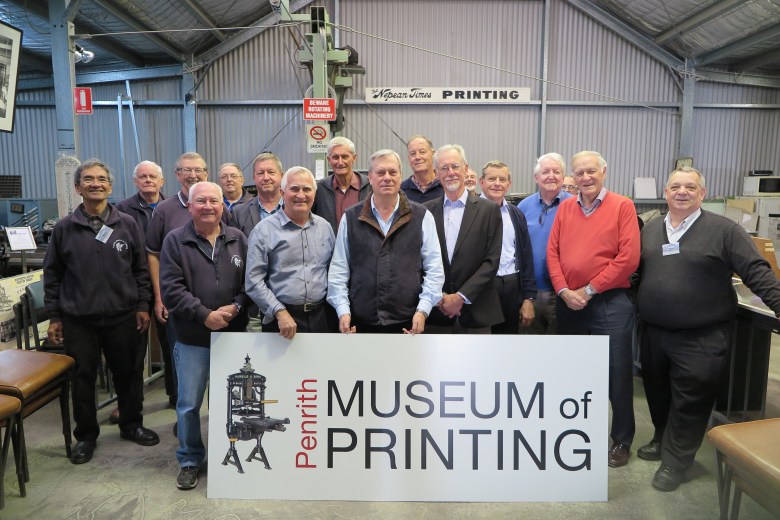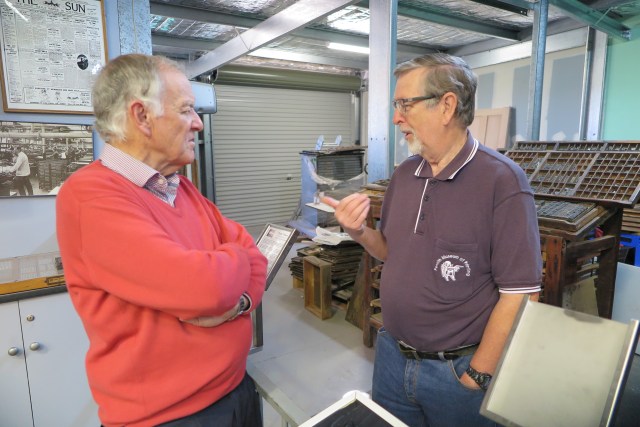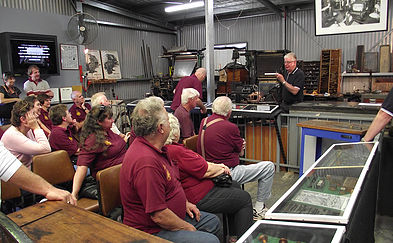
As any print historian will tell you, the craft dates back far longer than the famous Gutenberg press.
Block printing techniques date back to ancient Asia, while Korea created metal letterpress centuries before it was made popular, though it was kept within the upper echelons of society.
Spreading through Europe, letterpress printing created all the published work of 500 years of human history, as industrialisation brought education and knowledge to the masses.
Sadly, after dominating print production for centuries, letterpress skills are now disappearing. Penrith’s Museum of Print aims to keep the craft alive.
Featuring a mix of tradesmen specialising in letterpress printing, and equipment maintenance, the team at the museum takes visitors on tours, and holds courses on basic typesetting and letterpress operation, to supplement the uptake and restoration of the equipment.
Peter Butterworth is a compositor by trade, and part of the team at Penrith. He says, “I do get too passionate about it sometimes. I enjoy seeing people’s faces when you explain the lay out of the type cases, and why they’re called lowercase and uppercase. A lightbulb goes on, and at that point I think we have their attention..
“All sorts of machines were adapted to come up with movable type. It was the greatest thing in history, because it brought education to the masses, and achieved so much. After its introduction, there were 2000 printers in Europe in just 50 years.
“The Museum started 16 years ago when the Nepean Times closed, and the Wharfedale remained, along with a US-made Model 8 Linotype linecaster and a Chandler & Price guillotine.”
A chance meeting at a bank between Alan Connell, Museum founder and retired linotype mechanic, Neville James, set everything else in motion.
All the working equipment on show includes a Models 5 & 8 Linotypes, a Chandler & Price treadle platen, a Ludlow headline caster, Vandercook proofing machine, Vertical Miehle letterpress, a Heidelberg platen and a Cundall folder.
From letterpress blocks of a 1940s Australian comic about Nazi spies, to a Wharfedale press dating to back to the 1880s, the museum is a snapshot into Australia’s print history, and letterpress as a craft.
On the comic, Butterworth explains, “At the time, comics were printed in America, it was cheaper and easier. Because of the war, those things were not transferred over the Pacific, as everything was focused on the war effort, so that got the Australian comic scene to take off.
“It is a two-colour cover. It is not a bad read, I found one in the library to get the right order on the blocks, they are all in order and numbered, ready to go.
“We want to extend it by two pages, explaining the author, the process it went through, and why it was printed here.”
The Museum recently hosted the Society of Old Friends, and took the group of print veterans on a tour throughout the premises, laying out its vision for the future. Those attending included recently retired Steve Dunwell, as well as Greg Grace, Doug Alexander and Des Hayes.
Butterworth says, “Most of our volunteers worked on the floor, on machines. The managerial side is not our strength.
“The Old Friends seem to know lots of things. We are trying to keep in touch with them, looking for guidance and input. We are happy to show the machines, and enjoy that side of it, and enjoy bringing the industry to the public.
“It was a real eye-opener for us. It is important to know where we are going from here.
“We want to get the youth today to be involved in this industry. We were asked during once what will happen to these skills when you all pass away, and it was a bit of an awkward silence until I broke it by saying I am grabbing some lunch.
“It is a worry that there will be no body to take over from us.”
The Museum has just reopened following a year of renovations, in which it added extra space to accommodate machinery.
“We have another Albion press that is in sad need of some loving care. That is in the building ready to be started on, but that will take a few years, as bits need to be made, not that easy to come by,” says Peter Butterworth.
The Museum has not gone unnoticed, as famous Australian director Bruce Beresford has shown an interest.
Beresford is putting a movie together on the Herald in the late 1950’s and sought out an authentic method to be used in producing a daily paper, says Peter Butterworth.
For people that want to visit, the Museum organises tours on Monday-Friday. however they must be booked in advance.
They can arrange it either through the website or by calling them directly.
Butterworth says, “The letterpress courses are done on the weekend, as they are usually eight hours, and you finish with work you can take home.
“We do get a lot of donated pieces, however space is a premium. If there is something you have, give us a call, we will look at it. There is always that one piece that we think we should keep.
“However, metal gauges and setting sticks have to be very rare for us to say yes.”
If the preservation of print is something that you care about, you can get in contact with the Museum at 0415 625 573.
Comment below to have your say on this story.
If you have a news story or tip-off, get in touch at editorial@sprinter.com.au.
Sign up to the Sprinter newsletter


